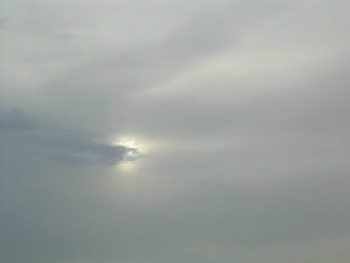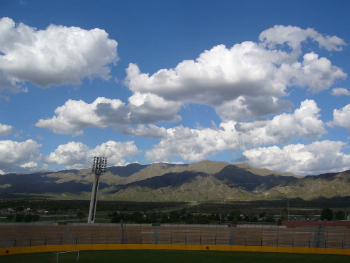Cloud types encompass the various classifications resulting from the agglutination of water droplets suspended in the air.
Remember that clouds form in the atmosphere from the condensation of water vapor which, in turn, occurs due to the evaporation of water by the sun's rays.
Classification and Characteristics
Clouds can be classified according to their height and shape. In relation to height they are classified into tall, medium and short.
High clouds have an altitude that can vary from 18 to 7 km, averages between 7 to 2 km and low ones between 2 to 0 km.

tall clouds
Cirrus (Ci): isolated white clouds formed by ice crystals. This is the most common type of clouds and they have an elongated shape, being thin and long. When they appear in the sky, it indicates that the weather is good.

Cirrocumulus (Cc): similar to cirrus, these clouds are whitish and formed by ice crystals. They have a more rounded shape and can appear isolated in the sky.

Cirrostratus (Cs): Consisting of ice crystals, this type of cloud is similar to a sheet or transparent veil and is therefore thinner and covers the entire sky. When it appears, it can form halos around the sun.

medium clouds
Altocumulus (Ac): With a fibrous and diffuse appearance, this type of cloud may appear with a whitish or grayish color. Formed by water droplets, they appear dispersed in the sky with the appearance of cotton tufts. When they appear, they may indicate thunderstorms at the end of the day.

Altostratus (As): when they appear in the sky they partially obscure the sun and have a color that varies from gray to blue. This type of cloud is made up of water droplets and ice crystals. It occupies a large area of the sky and looks like a fibrous sheet or veil.

low clouds
Stratus (St): With a stronger grayish color, this type of cloud covers the entire sun, and has a fog-like appearance, with an even layer. When they appear, they are usually accompanied by drizzle.

Cumulus (Cu): With a cotton aspect, they have a more defined shape and a more rounded shape. They are usually isolated and with a variation in color, which can be white and sometimes gray. When they appear, they indicate good weather with the presence of sun.

Stratocumulus (Sc): composed of water droplets and white and greyish coloration. Their shape is more rounded and they appear in rows. When they appear in the sky, they are usually accompanied by light rain.

Nimbostratus (Ns): with great extension and shapeless appearance, they have a dark blue and gray coloration. When they appear in the sky, they can completely hide sunlight, being common for them to be accompanied by longer and less intense rains.

In addition to this classification, there are also clouds with vertical development, from which the cumulonimbus (Cb). This type of cloud is mainly formed in the tropics and is responsible for hail, thunderstorms and even tornadoes. They usually cause strong storms with a lot of wind.

Read too:
Hail
Types of Rains
water cycle


